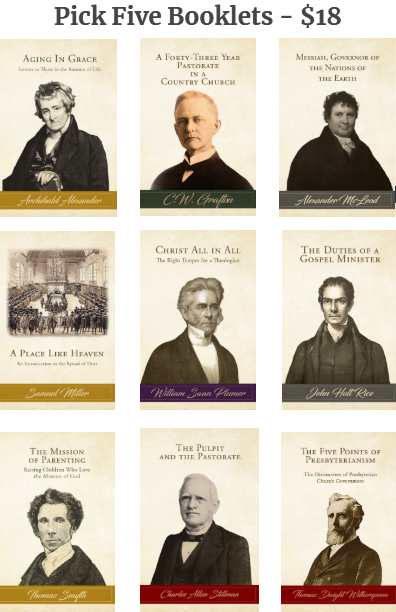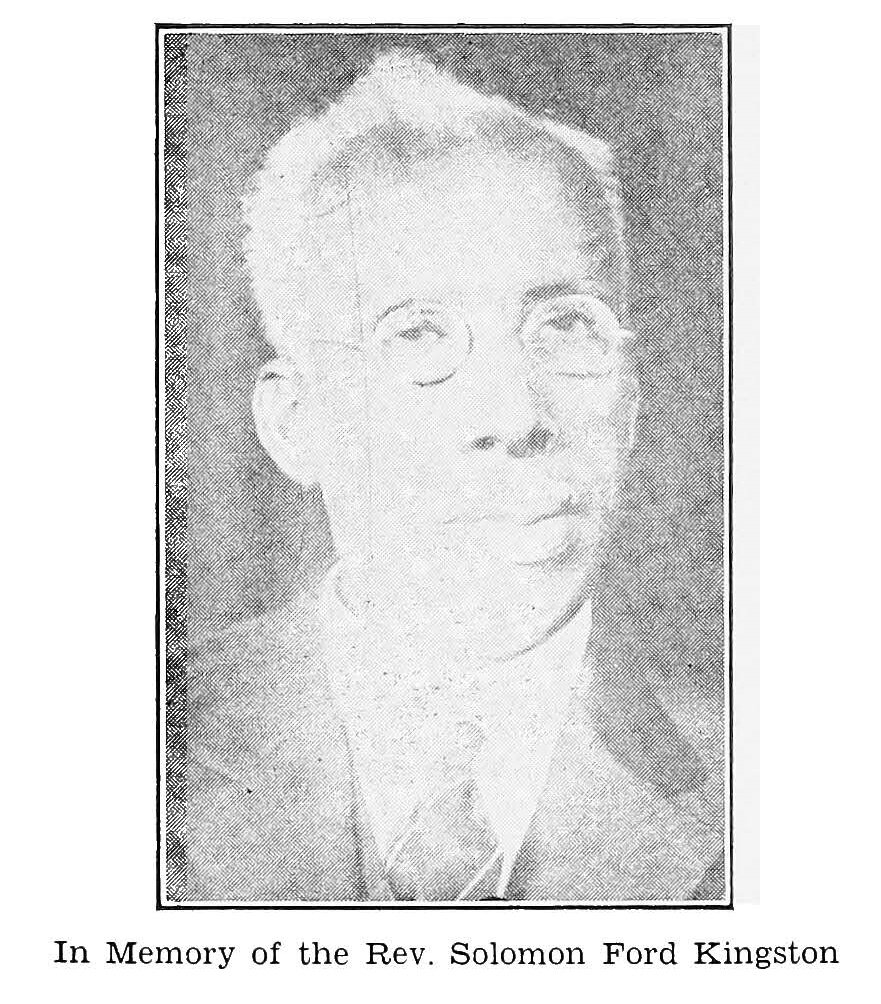(Receive our blog posts in your email by clicking here. If the author links in this post are broken, please visit our Free PDF Library and click on the author’s page directly.)
In 1859, one of the great historical and biographical contributions to the American Presbyterian Church was first published in Philadelphia by a young man named Joseph M. Wilson. Over the next decade, The Presbyterian Historical Almanac, and Annual Remembrancer of the Church became a very well-respected and indeed invaluable resource for the church of his day and for future historians.
There is some irony in the fact that this publisher of Presbyterian literature who did so much to memorialize the lives and contributions of others is shrouded in biographical mystery himself. In fact, some of his publications have been attributed erroneously to another Joseph M. Wilson who lived from 1838 to 1902. We believe that Wilson was born in Philadelphia in 1822. We are not sure when he died, but it does not appear that he published anything after 1868.
Operating from his place of business in downtown Philadelphia, during a very active span during the 1850s and 1860s, among the titles that Wilson published were:
Alfred Nevin, Churches of the Valley: or, An Historical Sketch of the Old Presbyterian Congregations of Cumberland and Franklin Counties, in Pennsylvania (1852);
Joseph H. Jones, The Attainments of Men in Secular and Religious Knowledge, Contrasted: A Sermon (1854);
Richard Webster, A History of the Presbyterian Church in America (1857);
Cortlandt Van Rensselaer, A Discussion on Slaveholding with George Armstrong (1858);
Stuart Robinson, The Church of God as an Essential Element of the Gospel (1858); and
Cortlandt Van Rensselaer, God Glorified by Africa: An Address Delivered on December 31, 1856 (1859).
Source: S. Austin Allibone, A Critical Dictionary of English Literature and British and American Authors (1908), Vol. 3, p. 2781.
At Log College Press, we are delighted to report that Wilson’s magnum opus, The Presbyterian Historical Almanac, and Annual Remembrancer of the Church, in ten volumes, has been uploaded here and is available for your perusal. We have often consulted these volumes as a valuable source of historical and biographical information. Wilson aimed at unity of the church, and his almanac spans all the main branches of American Presbyterianism. Not only ecclesiastical reports and updates — rendered during a critical period of time — and biographical sketches are found therein, but also portraits and illustrations of great interest.
What Wilson wrote in 1868 (the year of reunion) is a fitting summary of his goal in producing this Almanac and Remembrancer:
The main object of the work from its commencement has been to place upon permanent record the current history of every branch of the Presbyterian Church. To show that these Annual Chronicles meet the wants of those who are intelligently active in advancing the interests of Presbyterianism, I refer to what has already been accomplished:
I. Over five hundred and fifty Acts and Deliverances have been fully recorded, also —
II. Many judicial cases involving questions coming within the purview of Ecclesiastical Law.
III. Full accounts of various organizations, whereby the Church carries on its benevolent operations.
IV. Histories of Churches and Theological Seminaries,
V. Statistics of Churches, Boards and Committees.
VI. Lists of Ministers, giving the names and post-office of every Presbyterian minister in the world.
VII. Biographies of Presbyterian ministers who have died during the period covered by the publication of the Almanac, numbering between twelve and thirteen hundred.
VIII. Manses, being comfortable homes for Presbyterian ministers, free of rent, have been constantly urged upon the Church, and this subject is pre-eminently worthy of serious and active consideration.
IX. Libraries for Manses and Periodical Associations have been pleaded for and their importance demonstrated.
X. Statistical Tables, valuable as well as interesting.
The Almanac has also labored for the reunion of the Church; which, owing partly to the strong protesting element among Presbyterians, was divided into at least thirty branches, ranging in numbers from fourteen ministers up to twenty-eight hundred; and, though belonging to the same household of faith, the thin partitions thus erected tended to keep them apart.
In the Almanac these branches were brought together, and as the members thereof examined the "Records" — it was a bond of mutual sympathy to know that they all contended for the truth with the same zeal — were as keenly alive to the necessity resting upon them to extend the blessings of Christianity in our own and in foreign lands — to provide for the religious instruction of the children — to educate the rising ministry — to guard the declining years of the aged and infirm ministers, and tenderly care for the widows and orphans; and though thus engaged in advancing the interests of our common Christianity, and though one in spirit and believing in one Lord, one Faith and one Baptism, they were not organically one.
The influence exerted by the Almanac, however, in thus placing Presbyterians together in the same volume, naturally leads earnest and thoughtful members of the Church to the consideration of the question. Shall these divisions continue? — to which there is but one reply, viz.. Reunion. That work has begun. In the Almanac will be found the union of the Associate and Associate Reformed, forming The United Presbyterian Church of North America; The Presbyterian and the United Presbyterian, forming the Canada Presbyterian Church; The Synod and the Free Church of Nova Scotia, forming the Presbyterian Church of the Lower Provinces of British North America; and this latter body with the Synod of New Brunswick; the Presbyterian bodies in Australasia; The Presbyterian Church in the United States with the United Synod. In all these cases the "Basis" of "Union" is fully recorded, and in this volume will be found reunion indications distinct and significant; and so the work goes on; and will not every one join in the prayer of our Saviour, as given in the seventeenth chapter of the Evangelist John, and earnestly strive for the time when UNITY shall be the blessed condition of The Presbyterian Church throughout the world?
Now 21st century readers at Log College Press can take advantage of this invaluable ecclesiastical resource. Read Wilson’s Historical Almanac and Annual Remembrancer as a labor of love for the unity of the church, and these volumes will reward you well.











